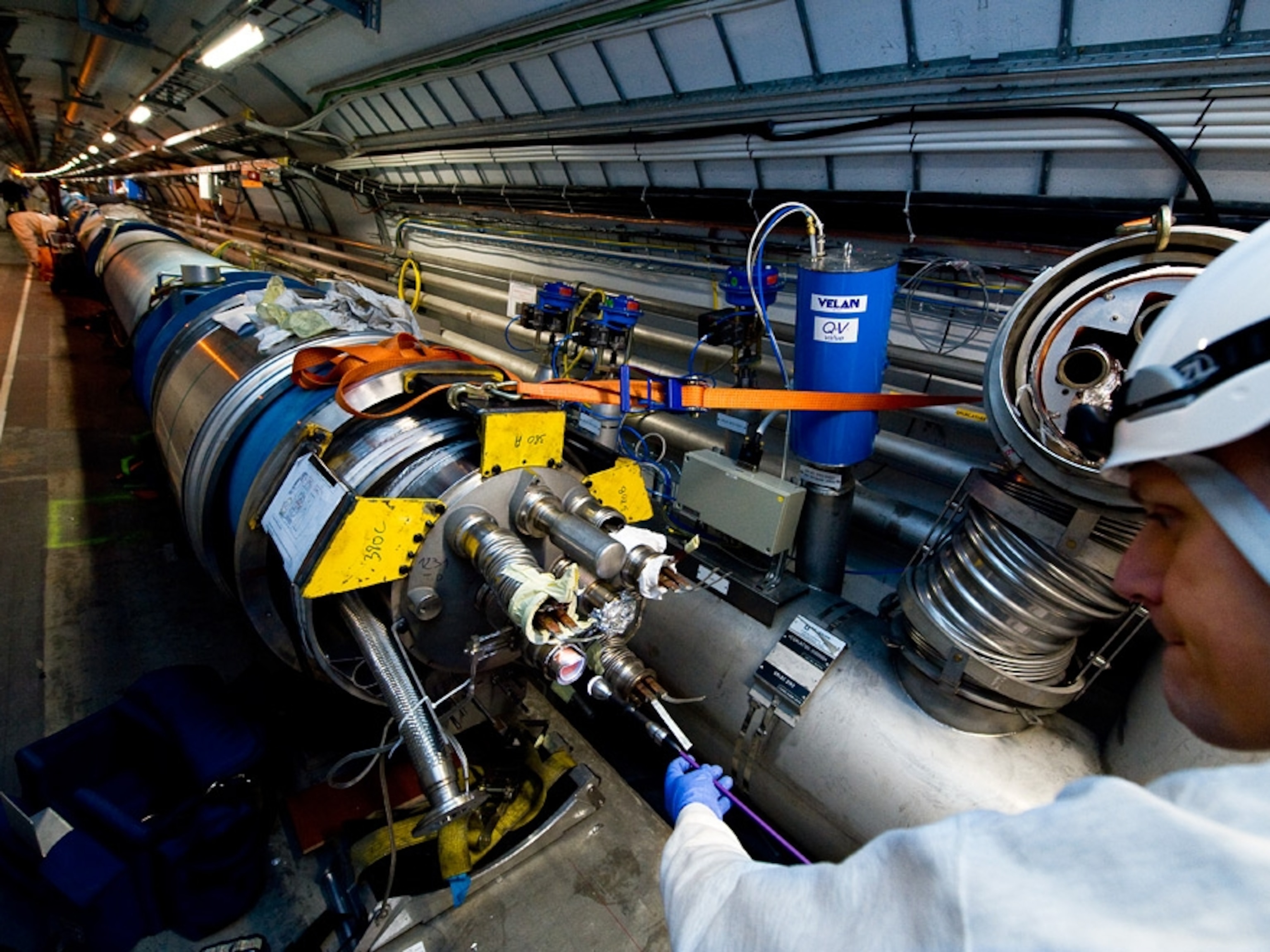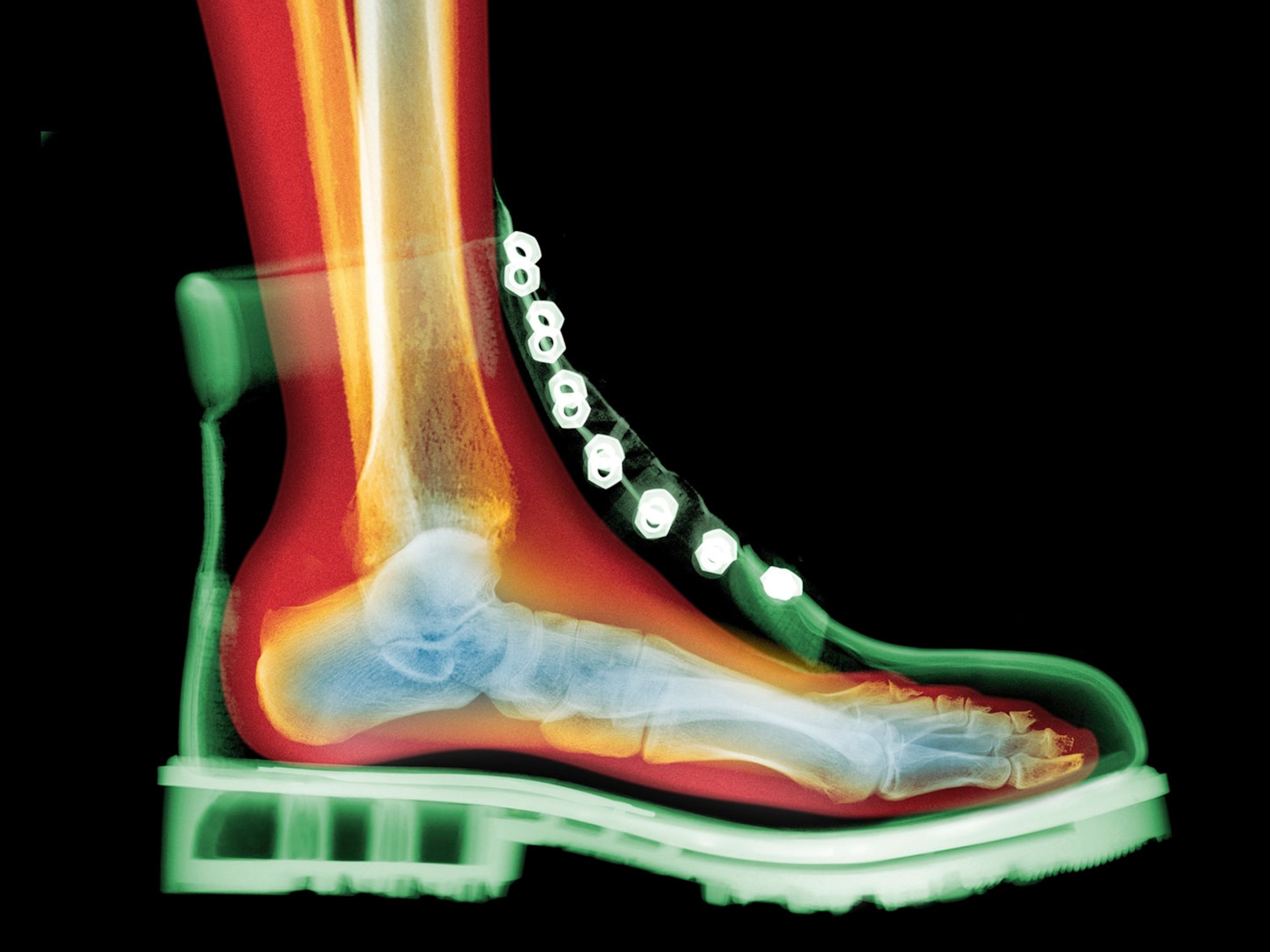
LHC Restarted: Half-Power Run Is Full of Potential
First particles of Large Hadron Collider's first extended run fired.
The Large Hadron Collider (LHC) has been reawakened, LHC directors announced today.
The first particle beams of the Hadron Collider's first extended run were circulated this weekend, beginning a several-week process to bring the atom smasher up to (half) speed.
The reboot comes after a run at the highest energies yet for any particle accelerator—or atom smasher—and a scheduled winter break.
The Large Hadron Collider will be run at only half power because equipment upgrades are needed before full-power operation is advisable, LHC scientists decided.
But the LHC should still be capable of some stunning discoveries, experts say—perhaps even the detection of extra dimensions or evidence of the Higgs boson, or "God particle."
Particle accelerators use electric fields to channel particles into extremely narrow, fast-moving beams. (Learn more about atom smashers.)
By colliding some of these beams, the physicists at the Large Hadron Collider hope to recreate the intense conditions just after the big bang and to solve other scientific riddles, such as the nature of dark matter, the invisible material that scientists think makes up most of the universe's mass.
Operated by the European Organization for Nuclear Research (CERN), the Large Hadron Collider is housed in an oval-shaped, 7-mile-long (27-kilometer-long) tunnel beneath the French-Swiss border.
(See Large Hadron Collider pictures.)
Large Hadron Collider: On Again, Off Again
After more than a year of repairs to fix electrical malfunctions that occurred during its initial run in September 2008, the Large Hadron Collider was restarted in November 2009.
In December scientists obtained the first scientific results from the LHC before a scheduled shutdown to save on electricity costs. (See "LHC Gets First Results; Step Toward 'God Particle'?")
Prior to the December shutdown, the Large Hadron Collider had set a new world record in high-energy physics by accelerating two beams of proton particles to 1.8 tera (trillion) electron volts (TeV) each and smashing them together, for a combined collision energy of 2.36 TeV.
Toward Full LHC Potential
Scientists have even more ambitious plans for the round that began this past weekend.
The current schedule calls for operating the machine at a level that would result in collisions with the energy of 7 TeV (3.5 TeV per beam) until late 2011 or early 2012.
The Large Hadron Collider will then be shut down once again so superconducting hardware can be upgraded to support collisions of 14 TeV—the Large Hadron Collider's maximum operating energy.
The 2012 rest period should last about a year, though the LHC team is "still looking at the planning of this shutdown, to try to devise ways of reducing its length," said Paul Collier, head of the beams department at CERN.
"God Particle" Proof Possible, Even at Half Power?
Even though the Large Hadron Collider won't be operating at its full potential, there are still plenty of exciting scientific discoveries that could be made, said Dan Green, a particle physicist at Fermilab in Illinois and a member of the Large Hadron Collider's Compact Muon Solenoid experiment.
"The energy increase matters," Green said. "At 7 TeV we open up new physics searches at high masses."
Even at half power, the LHC could yield evidence backing up the theory of supersymmetry, which says all the particles we know have more massive, but as yet undetected, partners, Green said.
The collider, he said, could also uncover "states reflecting large extra dimensions" beyond the three we know: the first (often represented by a line), second (a plane), and third (a cube).
Extra dimensions are predicted by string theory, an unproven concept that suggests that subatomic particles operate like tiny vibrating cords.
Evidence for the Higgs boson, which physicists think is responsible for mass in the universe, might also be found at the Large Hadron Collider's lower energies, Green added.
(Read about the God particle in National Geographic magazine.)
That's a tall order for an apparently delicate machine, but so far the Large Hadron Collider has performed admirably during current systems checks, CERN's Collier said.
"I am very impressed with it," Collier said. "It has already proved to be very stable and reproducible," meaning that LHC-experiment results can be reproduced—a key tenet of the scientific method.
"The evidence is in the speed with which we managed to get the machine up and running for early physics runs" in late 2009.





